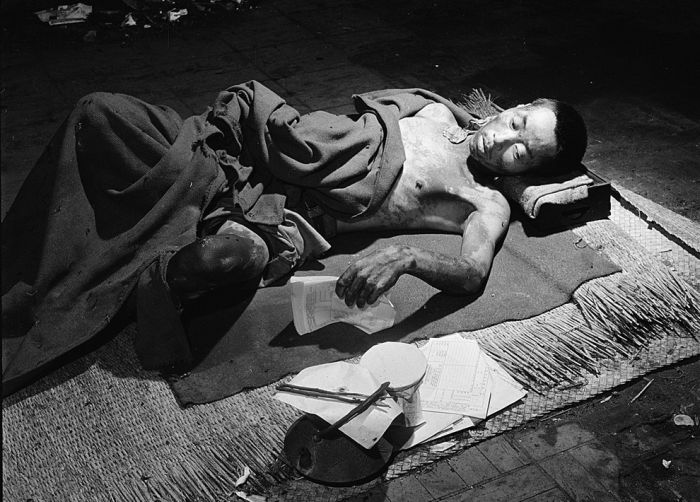|
|
History: Atomic Bombing Of Hiroshima, Japan
|
On the morning of August 9, 1945, the U.S. B-29 Superfortress Bockscar, flown by the crew of 393rd Squadron commander Major Charles W. Sweeney, carried the nuclear bomb code-named "Fat Man", with Kokura as the primary target and Nagasaki the secondary target. The mission plan for the second attack was nearly identical to that of the Hiroshima mission, with two B-29s flying an hour ahead as weather scouts and two additional B-29s in Sweeney's flight for instrumentation and photographic support of the mission. Sweeney took off with his weapon already armed but with the electrical safety plugs still engaged.
Observers aboard the weather planes reported both targets clear. When Sweeney's aircraft arrived at the assembly point for his flight off the coast of Japan, the third plane, Big Stink, flown by the group's Operations Officer, Lt. Col. James I. Hopkins, Jr. failed to make the rendezvous. Bockscar and the instrumentation plane circled for 40 minutes without locating Hopkins. Already 30 minutes behind schedule, Sweeney decided to fly on without Hopkins.
By the time they reached Kokura a half hour later, a 70% cloud cover had obscured the city, prohibiting the visual attack required by orders. After three runs over the city, and with fuel running low because a transfer pump on a reserve tank had failed before take-off, they headed for their secondary target, Nagasaki. Fuel consumption calculations made en route indicated that Bockscar had insufficient fuel to reach Iwo Jima and would be forced to divert to Okinawa. After initially deciding that if Nagasaki were obscured on their arrival the crew would carry the bomb to Okinawa and dispose of it in the ocean if necessary, the weaponeer Navy Commander Frederick Ashworth decided that a radar approach would be used if the target was obscured.
At about 07:50 Japanese time, an air raid alert was sounded in Nagasaki, but the "all clear" signal was given at 08:30. When only two B-29 Superfortresses were sighted at 10:53, the Japanese apparently assumed that the planes were only on reconnaissance and no further alarm was given.
|
|









